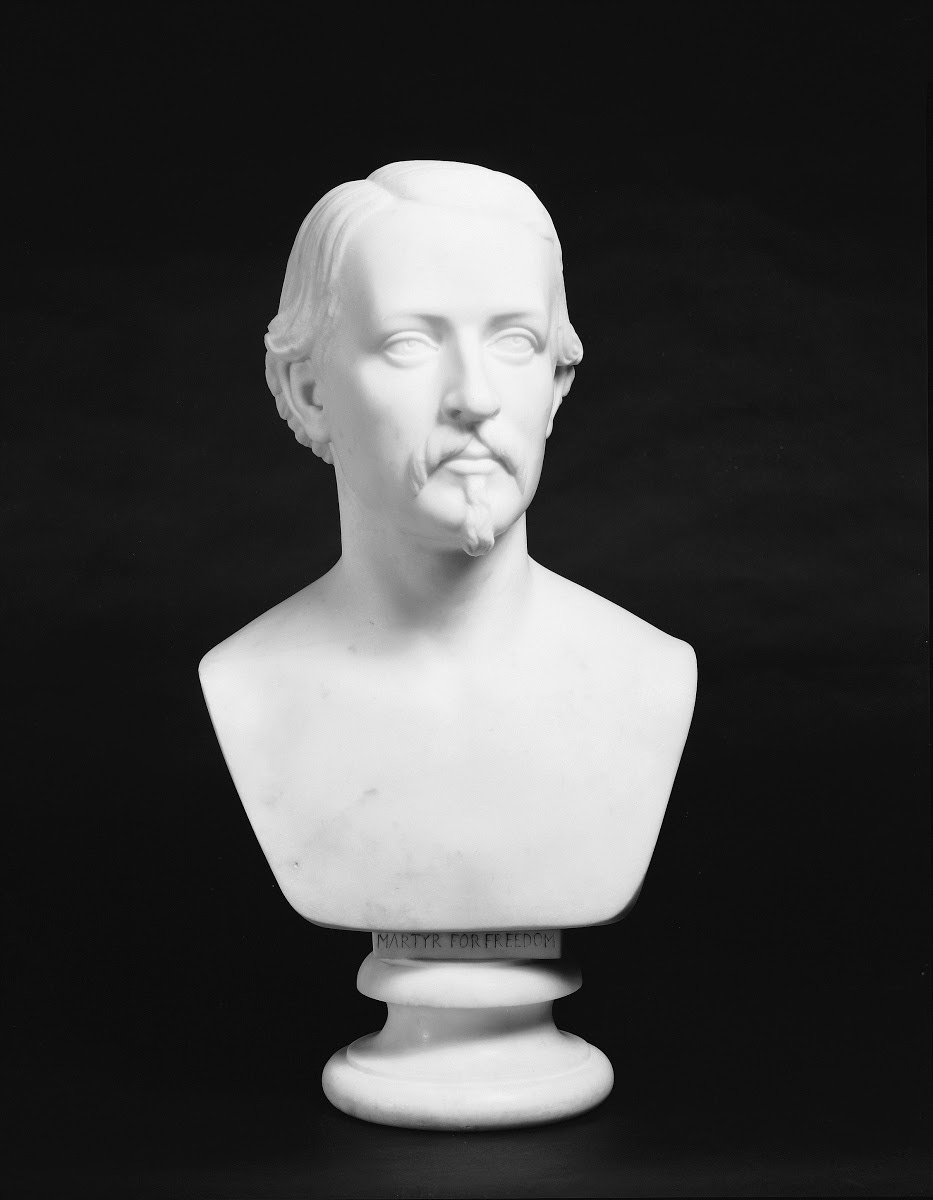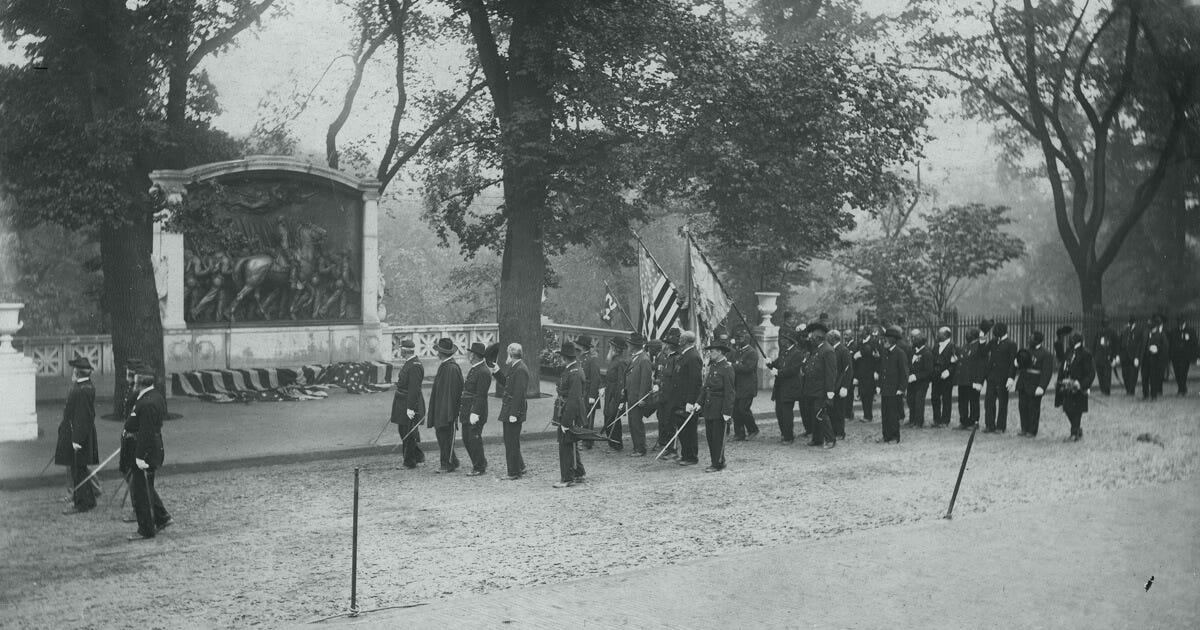
Colonel Robert Gould Shaw’s ascension to martyrdom was secured the moment that his father requested that his son’s body remain buried with the Black men in the 54th Massachusetts Volunteer Infantry, who fell alongside him in their failed assault at Battery Wagner on July 18, 1863. “We would not have his body removed from where it lies surrounded by his brave and devoted soldiers,” his father wrote. “We can imagine no holier place than that in which he lies, among his brave and devoted followers, nor wish for him better company.”
Shaw’s death took place midway through the war, the same month as United States victories at Gettysburg and Vicksburg, both signaling a shift in the course of the war. It had been roughly six weeks since the 54th paraded through Boston. White and Black abolitionists as well as advocates of Black enlistment hoped to demonstrate that the men in the 54th Massachusetts and other “colored” regiments could fight just as well as white soldiers.
Even though the assault against Battery Wagner proved unsuccessful, the heavy price in dead and wounded demonstrated the bravery of the regiment’s officers and especially its enlisted men.
Even more than the number of casualties, the loss of such a young colonel, from a prominent abolitionist family, helped to turn the failed assault into a moment of interracial triumph and promise.
Within a year Edward Bannister and Edmonia Lewis—both Black artists working in Boston—contributed what are likely the first works of art commemorating Shaw and the men in the 54th for a fair to raise money to benefit “the colored Massachusetts regiments.”
By the time the fair opened in October 1864 soldiers in the 54th and in other Black regiments were openly protesting the federal government’s refusal to pay them the same amount that white soldiers earned.
African Americans celebrated Shaw’s sacrifice to advance their commitment to ending slavery and the possibility of political equality in a reunited nation during Reconstruction and beyond.
Acknowledging Shaw’s heroics on Wagner’s ramparts and the willingness to sacrifice his life for the cause of abolition, strengthened connections with white allies, who now more than ever understood that a reunited nation was only possible with the end of slavery.
The availability of affordable illustrations depicting Shaw and the 54th engaging enraged Confederates at Battery Wagner, along with the dedication of Augustus Saint-Gaudens’s monument on the Boston Common in 1897 served as a continued reminder to many Americans that the four years of violence was for a higher cause, even if the nation continued to struggle to embrace it.
The memory of Shaw and the 54th as bound together in the cause of racial equality was arguably even more important by the early twentieth century and the rise of Jim Crow. Black families and civil rights leaders leveraged their legacy of military service and sacrifice during the Civil War to embolden their continued fight for civil rights and full citizenship.
The story of Shaw and the 54th Massachusetts has nourished generations of white and Black Americans in the hope of one day achieving full racial equality. It’s a compelling and satisfying story, but like all stories it is often overly simplified and detached from any meaningful historical context.
Shaw was not the freedom fighter that many have chosen to remember and celebrate. He viewed the war largely in pragmatic terms that shifted dramatically throughout 1862. By the end of the year Shaw even considered the possibility of ending the war with an independent Confederate nation and slavery intact though contained by free states.
The most satisfactory ending to me would be to have them [the Confederacy] brought to their knees, and then kicked out, and allowed to set up for themselves within certain limits. I would have them hemmed in on all sides by free States, and not allowed a chance of extending.
Shaw was uncertain about his decision in early February 1863 to accept command of the the first Black regiment raised in the North and he remained ambivalent about the impact that this decision would have on the course of his life and that of the nation even in his final days.
This is the Shaw that I have come to admire after years of research and reflection. Shaw and the men in the 54th came from drastically different backgrounds and shared little in their understanding of the broader purpose of the war.
And yet they managed to find a small piece of common ground on which to advance their respective agendas.
Shaw and his men didn’t transcend their differences to embrace a shared higher cause. Rather, they forged a coalition that ultimately allowed them to take one small step toward a goal that they could barely discern while standing on the beach at Morris Island on this day in 1863.
At at a time when we can see little more in one another than our differences, perhaps this is the lesson that we need to learn if we hope to take one small step forward together.
Want to Learn More about Shaw and the 54th Massachusetts?
Tonight at 7PM EST I will be hosting a presentation and discussion about the 160th anniversary of the assault on Battery Wagner for all paid subscribers. There is still time to upgrade your subscription if you are interested in participating. You can do so at a discount for a limited time.
As always, thanks for reading.







This past weekend, I attended a moving ceremony in Concord, Massachusetts, for George Washington Dugan, a Concord native who volunteered as a private for the 54th, when he was in his mid-40s, and was killed in action at Fort Wagner. His sacrifice had been forgotten by his home town till recently, but last Saturday a cenotaph--an official military headstone--was unveiled for him with full military honors at Sleepy Hollow Cemetery.
I only heard about it at the last minute, and by happenstance. I was in Concord for the Thoreau Society Annual Gathering, and found out from a friend at the Gathering, a professor at Middlebury who had grown up in Concord and known the organizer of the event, Joe Palumbo, since high school.